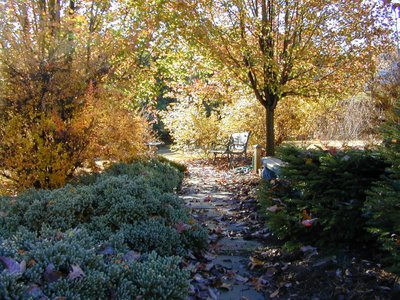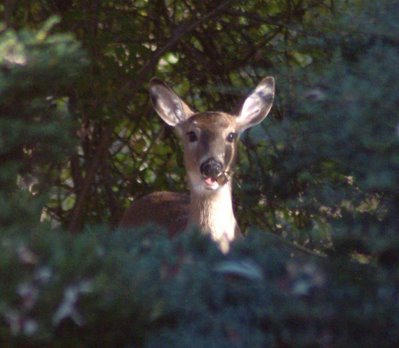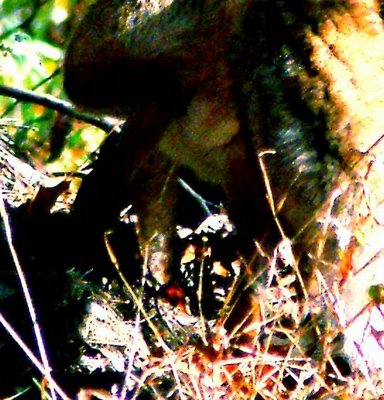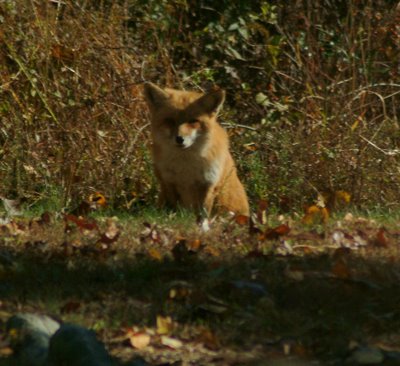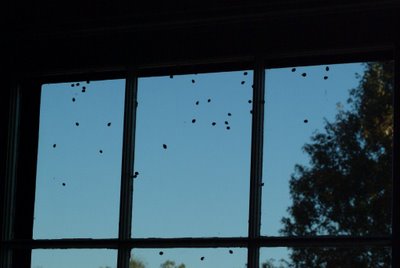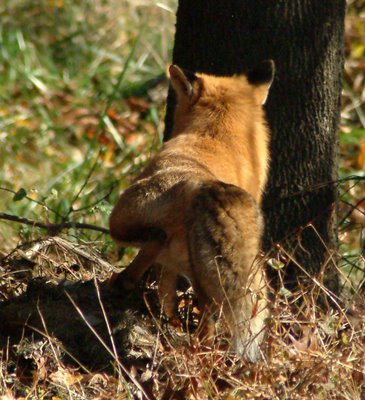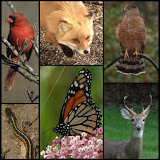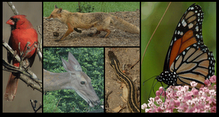Fall Coming to a Close
 Fall is beginning to come to an end in the Colvin Run Habitat – there are fewer and fewer leaves remaining on the trees and the remaining leaves have lost their bright colors. Overnight temperatures are always below 40 degrees now. One interesting result is that the remaining (those who have not migrated out or through) birds are not now burdened with building nests, keeping eggs warm, or feeding the young. As a result, there is always at least a dozen birds at the feeder – including cardinals, titmice, woodpeckers, wrens, nuthatches, chickadees, and increasing in number now juncos. In fact, the birds are eating far more seed than in the spring and summer. Also, they are far more relaxed in their behavior. Even the downy woodpeckers seem to linger on the suet feeder and be in no hurry to tend to the young. This appears to be the time of year for the birds to stop and smell the roses. Of course, if we had roses in the Habitat, the deer would have already eaten them, but you get the point.
Fall is beginning to come to an end in the Colvin Run Habitat – there are fewer and fewer leaves remaining on the trees and the remaining leaves have lost their bright colors. Overnight temperatures are always below 40 degrees now. One interesting result is that the remaining (those who have not migrated out or through) birds are not now burdened with building nests, keeping eggs warm, or feeding the young. As a result, there is always at least a dozen birds at the feeder – including cardinals, titmice, woodpeckers, wrens, nuthatches, chickadees, and increasing in number now juncos. In fact, the birds are eating far more seed than in the spring and summer. Also, they are far more relaxed in their behavior. Even the downy woodpeckers seem to linger on the suet feeder and be in no hurry to tend to the young. This appears to be the time of year for the birds to stop and smell the roses. Of course, if we had roses in the Habitat, the deer would have already eaten them, but you get the point.
